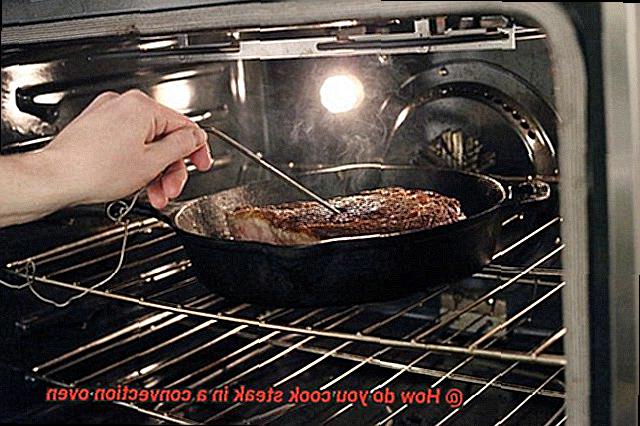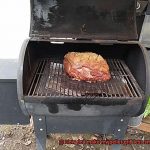Are you tired of the same old steak-cooking methods? Want to try something new and innovative? Well, look no further than your trusty convection oven. That’s right – you can cook a mouth-watering, juicy steak in your convection oven, and it’s easier than you may think.
The circulating fan and exhaust system in a convection oven evenly distribute heat throughout the oven, resulting in perfectly cooked dishes with minimal effort. And when it comes to steak, the convection oven is no exception. Whether you prefer rare or well-done steak, cooking it in a convection oven results in a crisp crust and tender interior that is sure to impress.
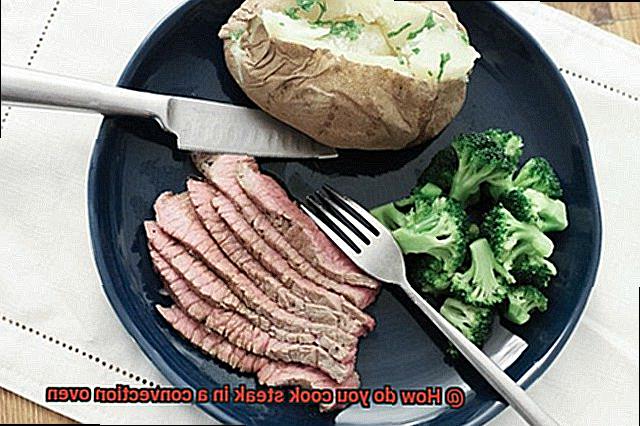
But how do you cook steak in a convection oven? It’s all about timing and temperature. First things first: preheat your oven to 450°F and let your steak come to room temperature. Season it with salt, pepper, and any other desired seasonings, then place it on a baking sheet. Cook the steak for around 10-12 minutes for medium-rare or adjust the time for your desired level of doneness.
In this blog post, we’ll explore everything there is to know about cooking steak in a convection oven. From tips and tricks for nailing the perfect temperature and timing to delicious seasoning combinations that will take your steak game up a notch – we’ve got you covered. So get ready to impress your family and friends with an expertly cooked steak from your very own convection oven.
Contents
What is a Convection Oven?
Get ready to revolutionize your cooking game with a convection oven. This type of oven uses a fan that circulates hot air inside the cooking chamber, resulting in faster cooking times and more consistent results. Whether you’re a professional chef or a home cook, a convection oven is a must-have tool in your kitchen.
So, what makes a convection oven different from a traditional oven? The answer lies in the way heat is distributed. In a traditional oven, heat rises to the top and slowly spreads throughout the cooking chamber, resulting in unevenly cooked food. On the other hand, a convection oven’s fan helps to evenly distribute hot air throughout the entire cooking chamber, ensuring that your food is cooked to perfection every time.
But that’s not all – convection ovens have other advantages over traditional ovens. For instance, they can be used at lower temperatures than traditional ovens, resulting in energy savings. Additionally, convection ovens are perfect for cooking multiple dishes at once because you don’t have to worry about flavors or aromas mixing together.
Now that we’ve covered the basics of a convection oven, let’s discuss how you can use it to cook an amazing steak. Firstly, choose a thick cut of steak like ribeye or New York strip and let it come to room temperature before seasoning it with salt and pepper or any other desired seasonings.
Next, preheat your convection oven to 375°F and place the steak on a wire rack over a baking sheet to allow for air circulation and even cooking. Cook the steak for 10-12 minutes for medium-rare, flipping halfway through. To ensure the steak is cooked perfectly, use a meat thermometer to check its internal temperature – it should be 130°F for medium-rare.
Once your steak is cooked to perfection, take it out of the oven and let it rest for 5-10 minutes. Allowing it to rest helps the juices redistribute throughout the meat, resulting in a more flavorful and tender steak.
Choosing the Right Cut of Steak
Cooking steak in a convection oven is a great way to achieve a delicious, juicy meal. But the key to success lies in selecting the right cut of steak. As an expert, I’m here to guide you through the nuances of choosing between ribeye, filet mignon, and sirloin steak for cooking in a convection oven.
Let’s start with the ribeye, a classic cut that is beloved for its marbling and tenderness. When cooked in a convection oven, the high heat crisps up the exterior while keeping the interior moist and flavorful. The result? A mouth-watering steak that is sure to impress your guests.
If you prefer a leaner cut of steak, then filet mignon is the way to go. This tender cut can withstand higher temperatures without drying out, making it perfect for cooking in a convection oven. Be sure to season it well before cooking to enhance its subtle flavor.
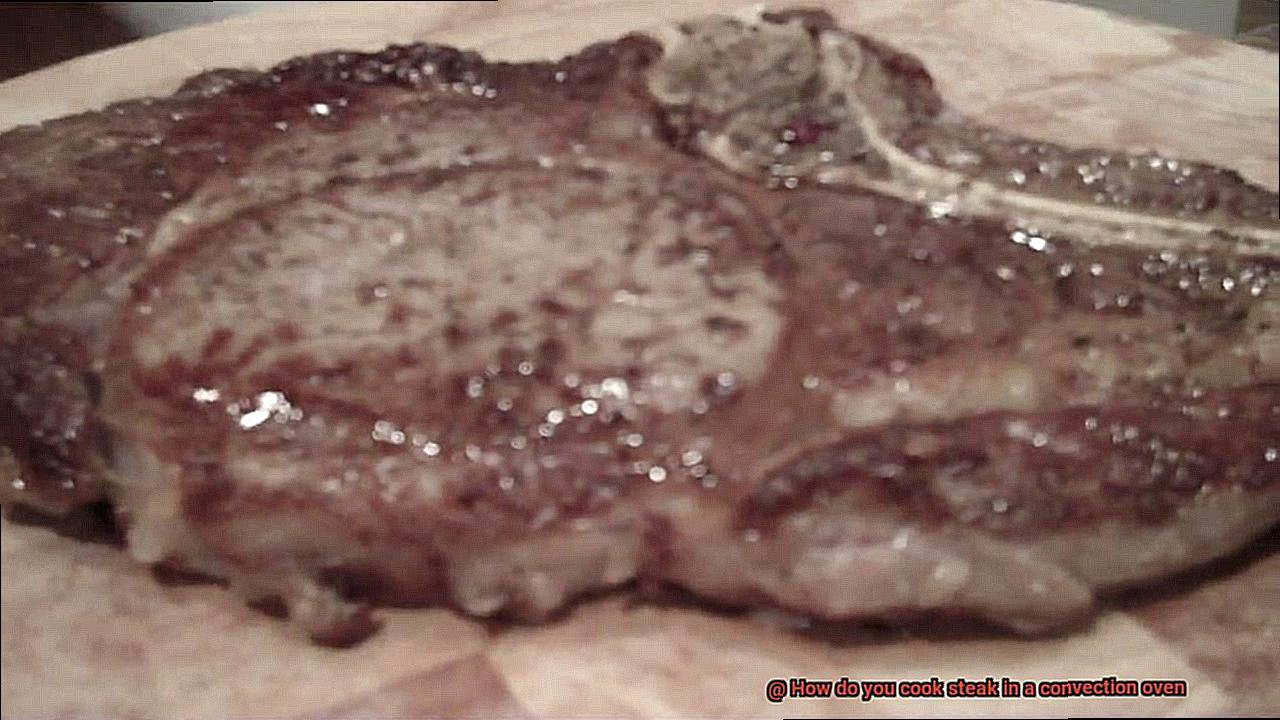
For those on a budget, sirloin steak is an excellent option for cooking in a convection oven. While leaner than other cuts, it still has enough marbling to keep it moist and delicious. Cook it to medium-rare or medium to avoid toughness.
When selecting the right cut of steak for your convection oven, thickness, marbling, and tenderness are key factors to consider. For your convenience, here’s a quick summary:
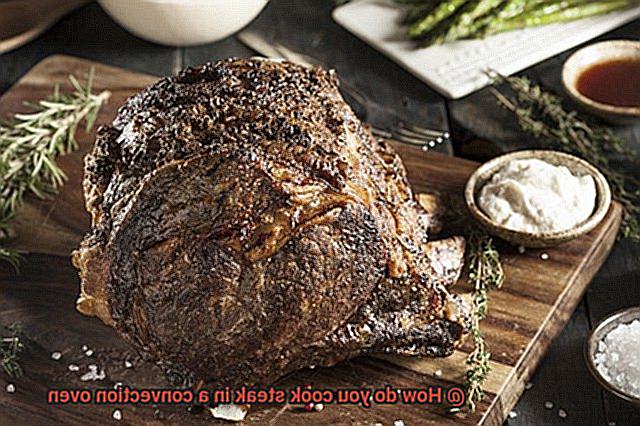
- Ribeye: Marbled and tender; perfect for roasting.
- Filet Mignon: Lean and tender; ideal for higher temperatures.
- Sirloin Steak: Affordable and lean; cook to medium-rare or medium.
Letting the Steak Come to Room Temperature
This simple step can make all the difference in the final product.
When you cook a cold steak straight from the fridge, the outside layer will cook faster than the inside. This results in a dry and tough steak that no one wants to eat. By letting your steak reach room temperature, you are ensuring that it cooks evenly throughout, resulting in a juicy and flavorful meal.
But how long should you let your steak sit out? It depends on the thickness of the cut, but generally, I recommend leaving it on the kitchen counter for about 30 minutes to an hour. During this time, it is important to keep your steak covered with plastic wrap or a clean dish towel to prevent it from drying out or attracting bacteria.
Seasoning your steak with salt and pepper before letting it come to room temperature is also crucial. The seasoning will penetrate deeper into the meat once it is at room temperature and enhance its flavor.
In summary, letting your steak come to room temperature is a vital step when cooking a steak in a convection oven. Here are some key reasons why:
- It ensures that your steak cooks evenly throughout.
- It results in a juicier and more flavorful meal.
- It allows the seasoning to penetrate deeper into the meat.
- It prevents your steak from drying out or attracting bacteria.
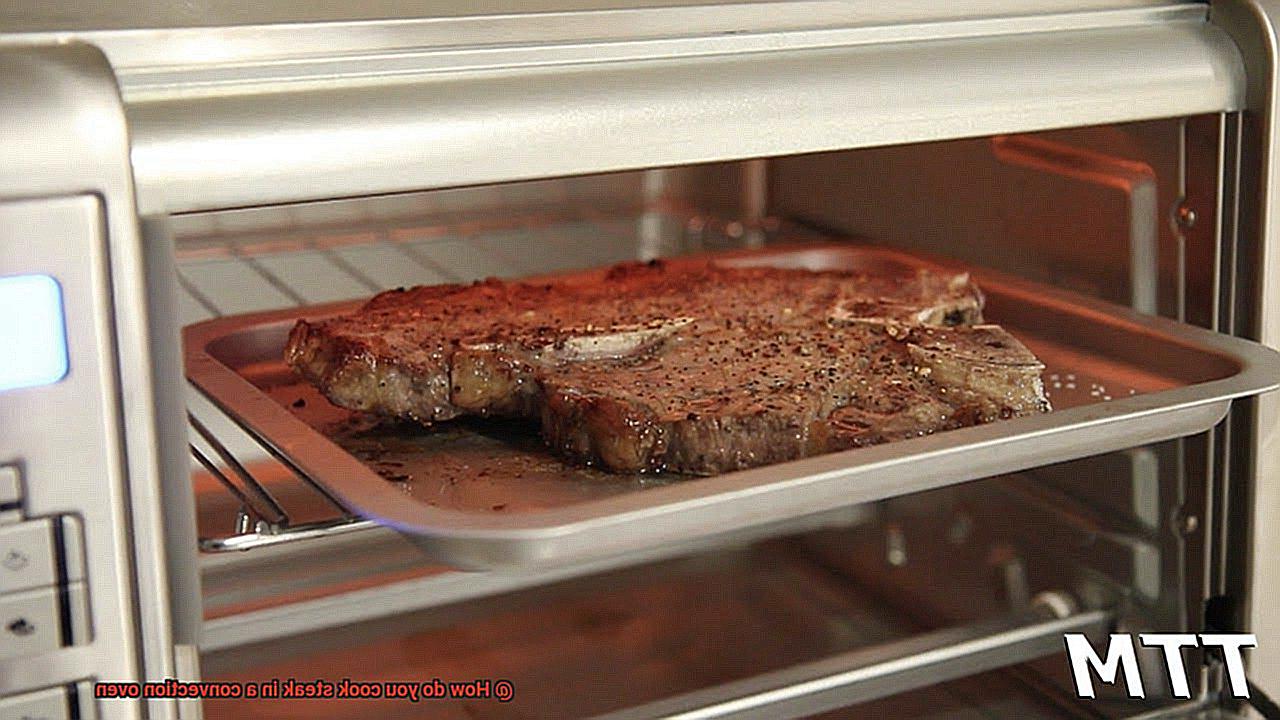
Seasoning the Steak
The key to a flavorful and succulent steak lies in the seasoning. But how do you season it perfectly? Fear not, as I have gathered some expert tips to guide you through this process.
Firstly, ensure that your steak reaches room temperature before seasoning. This allows for even cooking and prevents the center from being too cold. Next, pat the steak dry with paper towels to remove any excess moisture. This step is vital as it helps the seasoning stick to the meat and create a mouth-watering crust.
Now, it’s time to get creative with the seasoning. Salt and pepper are a must, but don’t stop there. Other herbs and spices like garlic powder, thyme, or rosemary can add an extra layer of flavor and depth that will tantalize your taste buds. Rub the seasoning generously into the meat to ensure that it’s evenly distributed.
If you have some extra time on your hands, marinating your steak can take it to new heights of flavor. Create a simple marinade by mixing olive oil, balsamic vinegar, garlic, and herbs together. Place the steak in a resealable plastic bag and pour in the marinade. Allow the meat to marinate in the refrigerator for at least 30 minutes or even up to 24 hours before cooking.
Preheating the Convection Oven
Look no further than the simple yet crucial step of preheating your convection oven.
To start, set your oven to the desired temperature – typically 375-400 degrees Fahrenheit for medium-rare to medium doneness. But don’t rush to throw in your steak just yet. Give the oven at least 10-15 minutes to preheat, ensuring that your steak will cook evenly and achieve a perfect sear on the outside.
It’s important to keep in mind that convection ovens cook faster than traditional ones. Keep a watchful eye on your steak to avoid overcooking and use a meat thermometer to ensure that it reaches the desired internal temperature. For medium-rare, aim for around 130-135 degrees Fahrenheit, while medium doneness is around 140-145 degrees Fahrenheit.
So why is preheating so important? It allows for even cooking, ensuring that every bite of your steak is cooked to perfection. Plus, that sear on the outside? It’s what dreams are made of.
Cooking the Steak in the Convection Oven
No worries, because cooking a steak in a convection oven is a great alternative that will leave your taste buds singing. As an expert in this field, let me guide you through the easy steps to achieving a delicious steak in the comfort of your own kitchen.
First off, preheat your convection oven to 400°F and let it warm up for 10-15 minutes. This essential step ensures that your steak cooks evenly and comes out just right. While the oven is heating up, season your steak with salt and pepper or any other desired seasoning. You can even marinate your steak beforehand to add extra flavor.
Next, place your seasoned steak on a baking sheet or in a roasting pan, making sure it’s not touching any other pieces of meat or the edges of the pan. This allows for even cooking and prevents sticking. Put the pan in the preheated oven and let it cook for about 10-12 minutes for a medium-rare steak, or longer if you prefer your steak more well-done. Don’t forget to use a meat thermometer to check the internal temperature of your steak. For medium-rare, aim for an internal temperature of around 135°F, while well-done steaks should be cooked to 160°F.
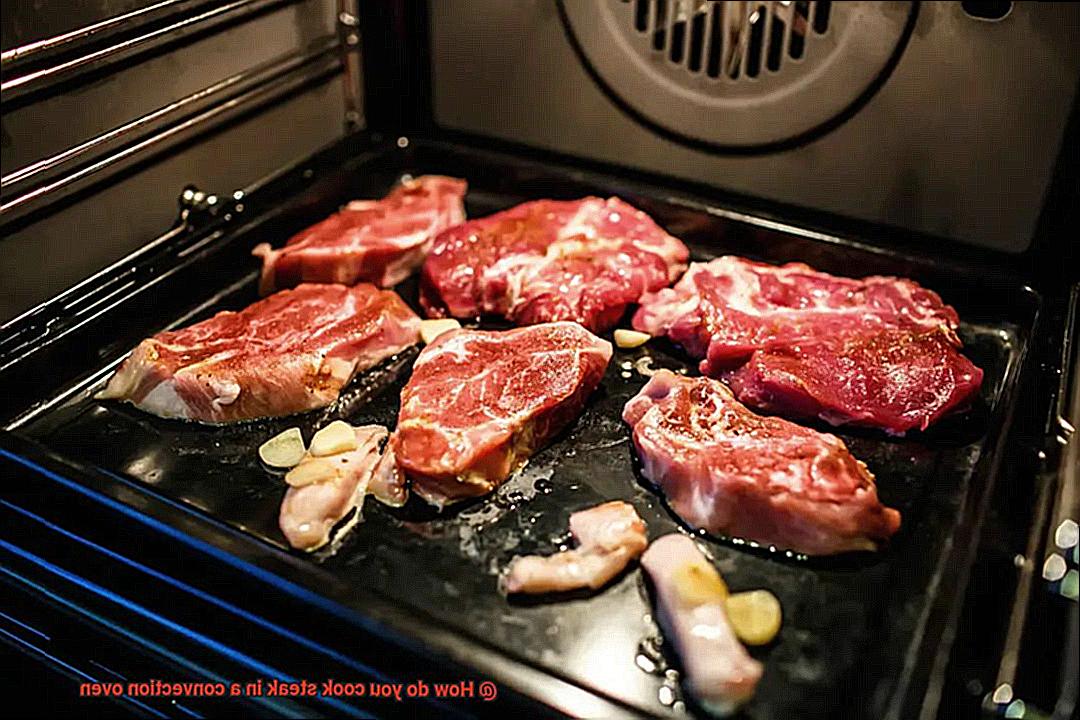
Once your steak is cooked to perfection, take it out of the oven and let it rest for a few minutes before slicing. This crucial step allows the juices to redistribute throughout the meat, resulting in a juicy and tender steak that will make your mouth water.
Checking for Doneness with a Meat Thermometer
In the previous section, we discussed how to cook a tantalizing steak in a convection oven. However, every steak aficionado knows that getting the temperature and doneness perfect is the key to a mouthwatering meal. Luckily, using a meat thermometer is an accurate and reliable way to achieve this.
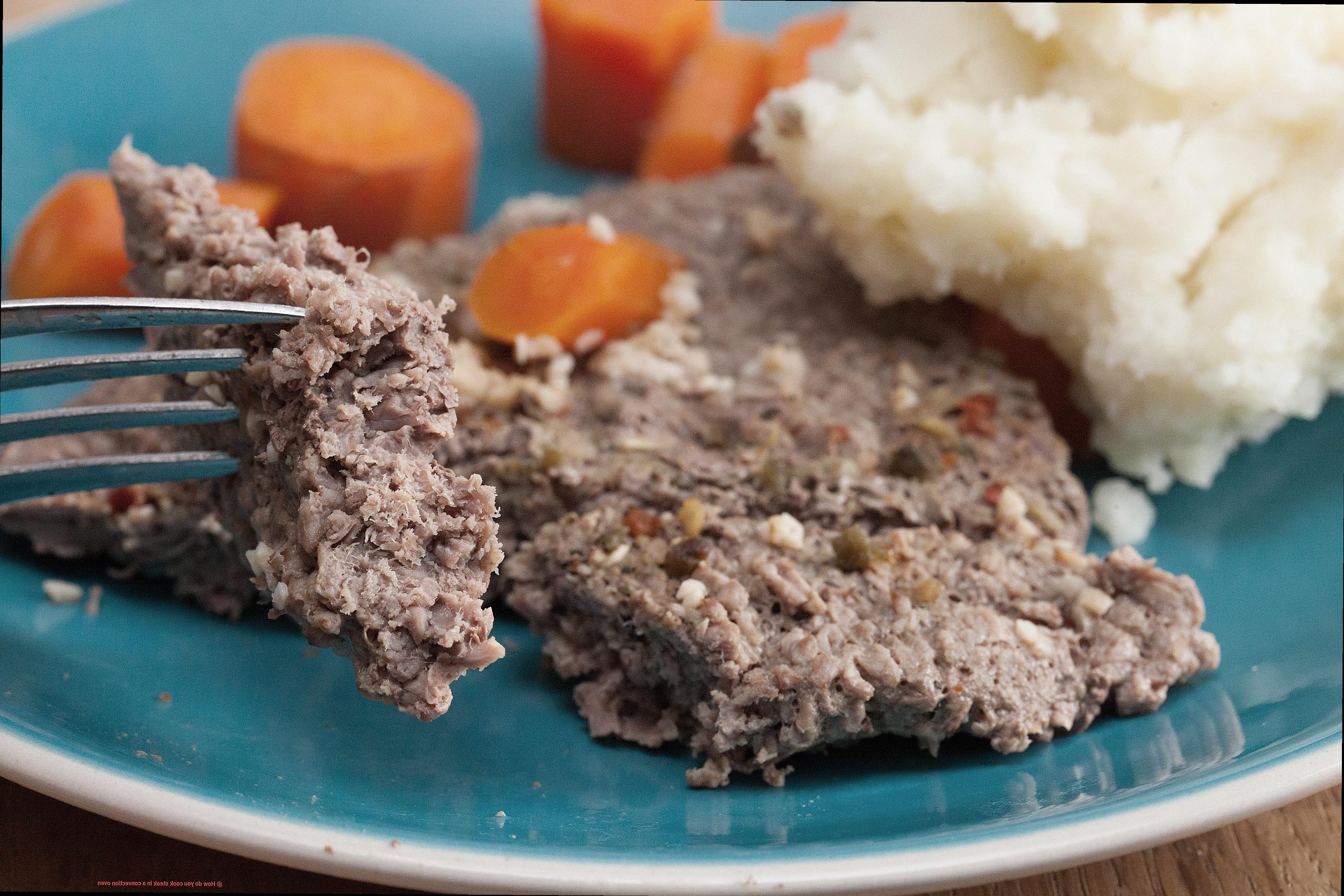
As an expert in checking for doneness with a meat thermometer, I highly recommend this method to ensure your steak is cooked to perfection. Here’s a breakdown of how to use a meat thermometer when cooking steak in a convection oven:
Firstly, it’s crucial to ensure that your meat thermometer is calibrated and accurate. Once you have that covered, insert the probe into the thickest part of the steak, ensuring that you avoid touching any bones. Wait for the temperature to stabilize, and voila. You now have an accurate reading of the internal temperature of your steak.
Now comes the fun part: comparing the temperature to a doneness chart to determine if your steak is cooked to your liking. For those who relish rare steak, aim for an internal temperature of around 125°F. Medium-rare fans should look for around 135°F, while medium steak enthusiasts should aim for around 145°F. If you prefer your steak medium-well or well-done, aim for 150°F and 160°F respectively.
It’s important to note that the temperature of the steak will continue to rise slightly even after it has been removed from the oven. Therefore, I recommend removing the steak from the oven when it is about 5-10 degrees below your desired doneness temperature. This will prevent overcooking and ensure that your steak is perfectly cooked.
However, if you’re feeling adventurous and want to try something other than a meat thermometer, you can also use the finger test to check for doneness. Simply press on the center of the steak with your finger and compare the resistance to different parts of your hand. For instance, a rare steak will feel similar to pressing on the fleshy area between your thumb and index finger when your hand is relaxed. Meanwhile, a well-done steak will feel similar to pressing on the back of your hand with your fingers spread apart.
Resting the Steak After Cooking
Cooking the perfect steak is an art form, and resting the steak after cooking is a crucial step in achieving a delicious and tender meal. You might be eager to cut into that juicy meat as soon as it comes out of the convection oven, but hold on just a minute. By allowing your steak to rest for a few minutes, you’ll unlock its full potential.
Here’s why resting your steak after cooking is so important:
- Juices will redistribute: When you cook a steak, its juices move towards the surface. If you cut into it too soon, those juices will spill out and leave you with a dry and unappetizing piece of meat. Resting the steak for just a few minutes allows those juices to settle back into the meat, resulting in a juicy and flavorful steak.
- Tender meat: Resting your steak also allows the muscle fibers to relax and become more tender. This means each bite will practically melt in your mouth, leaving you with a memorable culinary experience.
- Optimal temperature: By letting your steak rest, you also give it time to cool down slightly so that it reaches its optimal temperature. This means you can enjoy your steak at its best without burning your mouth or waiting for it to cool down.
So, how do you rest your steak? The process is simple. Remove it from the oven and place it on a cutting board or plate. Cover it loosely with foil to keep it warm and let it rest for about 5 minutes per inch of thickness. During this time, take the opportunity to prepare any sides or sauces you want to serve alongside your steak.
Just remember not to let your steak rest for too long, as it can become cold and lose its optimal temperature. You’ve worked hard to cook the perfect steak, so don’t let all that effort go to waste by neglecting the resting process.
6eQOtsqpKVA” >
Conclusion
Cooking steak in a convection oven is a game-changer when it comes to achieving a mouth-watering, juicy meal. The circulating fan and exhaust system work together to distribute heat evenly throughout the oven, resulting in perfectly cooked dishes with minimal effort. Achieving the perfect steak in a convection oven requires attention to detail, timing, and temperature.
To start, preheat your oven to 450°F and let your steak come to room temperature. Season it with salt, pepper, and any other desired seasonings before placing it on a baking sheet. Choosing the right cut of steak is also crucial when cooking in a convection oven. Ribeye is marbled and tender; perfect for roasting while Filet Mignon is leaner and tender; ideal for higher temperatures. Sirloin Steak is affordable and lean; cook it to medium-rare or medium.
Before cooking your steak in the preheated convection oven at 375°F for about 10-12 minutes (for medium-rare), generously season it with salt, pepper, herbs or spices. It’s important to check its internal temperature using a meat thermometer (130°F for medium-rare) to ensure that you achieve the desired level of doneness.
Once your steak has reached the perfect temperature, let it rest for 5-10 minutes before slicing into it. This will allow the juices to redistribute throughout the meat, resulting in an even more delicious meal.
In conclusion, cooking steak in a convection oven is an easy way to impress your family and friends with an expertly cooked dish. By following these tips – from choosing the right cut of meat to letting it rest before serving – you can achieve restaurant-quality results from your very own kitchen.

